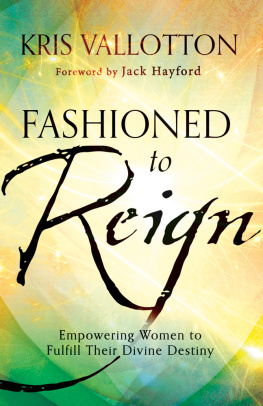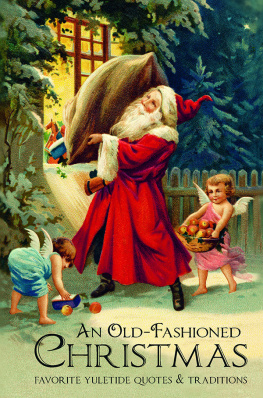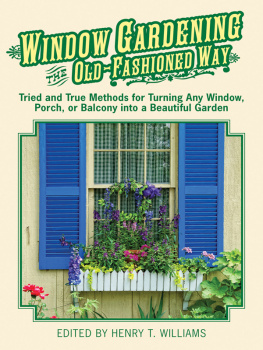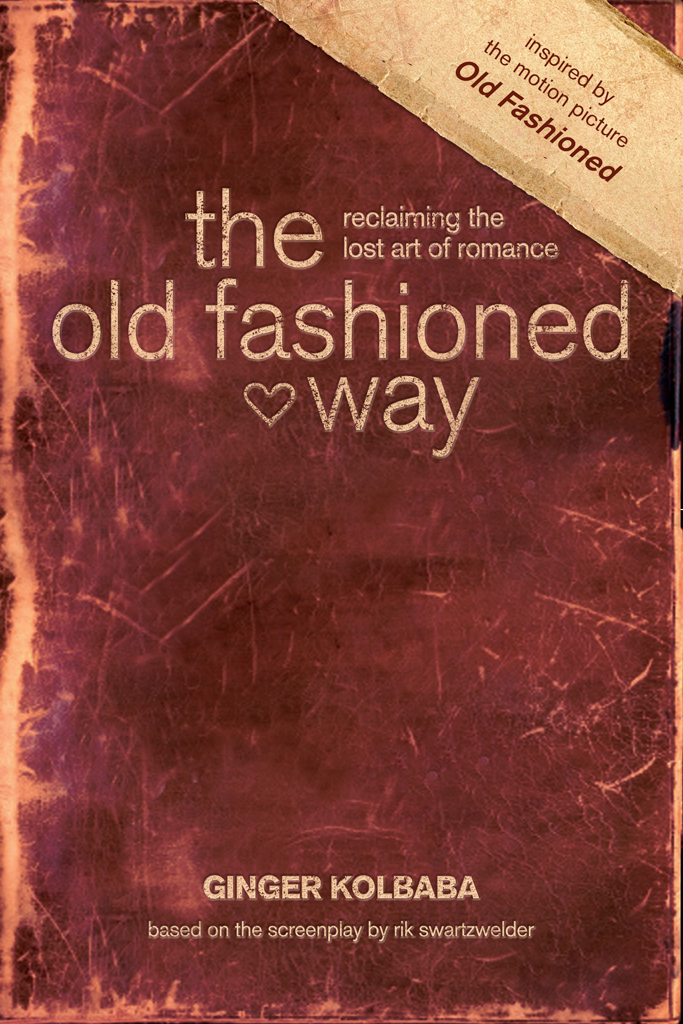Visit Tyndale online at tyndale.com.
Tyndale and Tyndales quill logo are registered trademarks of Tyndale House Publishers, Inc.
The Old Fashioned Way: Reclaiming the Lost Art of Romance
Copyright 2014 by Old is New, LLC. All rights reserved.
Cover photograph of leather copyright Spiderplay/iStockphoto. All rights reserved.
Designed by Jacqueline L. Nuez
Edited by Jonathan Schindler
Exclusive representation by Working Title Agency, LLC, Spring Hill, TN. Published in association with Books and Such, Inc., Attn: Janet Kobobel Grant, 5926 Sunhawk Dr., Santa Rosa, CA 95409.
Unless otherwise indicated, all Scripture quotations are taken from the Holy Bible, New Living Translation, second edition, copyright 1996, 2004, 2007 by Tyndale House Foundation. (Some quotations may be from the NLT, first edition, copyright 1996.) Used by permission of Tyndale House Publishers, Inc., Carol Stream, Illinois 60188. All rights reserved.
Scripture quotations marked KJV are taken from the Holy Bible, King James Version.
Scripture quotations marked The Message are taken from The Message by Eugene H. Peterson, copyright 1993, 1994, 1995, 1996, 2000, 2001, 2002. Used by permission of NavPress Publishing Group. All rights reserved.
Scripture quotations marked NASB are taken from the New American Standard Bible, copyright 1960, 1962, 1963, 1968, 1971, 1972, 1973, 1975, 1977, 1995 by The Lockman Foundation. Used by permission.
Scripture quotations marked NIV are taken from the Holy Bible, New International Version, NIV. Copyright 1973, 1978, 1984, 2011 by Biblica, Inc. Used by permission of Zondervan. All rights reserved worldwide. www.zondervan.com.
Library of Congress Cataloging-in-Publication Data
Kolbaba, Ginger.
The old fashioned way : reclaiming the lost art of romance / Ginger Kolbaba.
pages cm
Based on the screenplay by Rik Swartzwelder.
Includes bibliographical references.
ISBN 978-1-4143-7974-6 (sc)
1. Man-woman relationships Religious aspects Christianity. 2. Love Religious aspects Christianity. 3. Dating (Social custom) Religious aspects Christianity. I. Title.
BT705.8.K66 2013
248.8'4 dc23 2013009928
ISBN 978-1-4143-8256-2 (ePub); ISBN 978-1-4143-8257-9 (Kindle); ISBN 978-1-4143-8255-5 (Apple)
Build: 2021-04-22 10:43:03 EPUB 3.0
A Note from Rik Swartzwelder
When you are a writer, you are often asked the question, How did you come up with the idea for fill-in-the-blank?
In the case of Old Fashioned, this question is hard to answer. As Clay says in the film, It wasnt just one thing; it was more like a lot of little things, all adding up.
If I had to pick a starting point, it would be that Id begun to feel the absence of a movie that accurately reflected the lives of the people I knew personally: single people who took the idea of honoring God in their dating relationships seriously. How would a movie like that look? I wondered. And how could you craft it in a way that wasnt propaganda or completely Pollyanna?
A lot of other stuff went into the mix, of course, but that was the start. As I sketched out the basic outline of the story, I knew I needed an image that would be a cornerstone for the film. Such things do not always come easy in the creative process, but this time I saw it right away.
Feet at a threshold.
I couldnt shake that image or the idea that most mistakes in life are cemented by choices made long before any actual fall. We cross a threshold, and that leads to... and that leads to...
What if you applied that image to a romantic context, and what if you had a character who took that threshold seriously a character who, for whatever reason, had committed himself to make decisions in advance of the moment? Maybe he began living this way for redemptive reasons, maybe it morphs into a form of isolation that he never intended, maybe he begins to doubt.
What if?
That was the birth of the rather odd and curious character of Clay Walsh and the genesis of what would eventually become the screenplay and motion picture titled Old Fashioned.
Cut! Print! Moving on! But why this book?
Good question. I can assure you that when I first sat down to write the screenplay for Old Fashioned, the last thing on my mind was a nonfiction companion book about dating, courtship, and romance.
I would never claim to be any kind of expert on those things. (I can supply much expert testimony and many witnesses confirming that I am not.) And second, more important, movies are about story above all. About entertainment. True, good movies can be more. They can educate, they can inspire, they can nudge the world in a new and positive direction. But unless they entertain, none of those more noble aspirations has a chance.
We dont go to the movies to see a how to on any given topic; we go to be transported outside of ourselves, to share in and somehow connect with the journey of another. To be moved. How-to manuals, no matter how helpful they are, rarely move us in the same way that a film or a song or a painting can.
In saying that, I dont mean to slight how-to books at all; they are needed. Generally speaking, books are much better suited to reflection, to stopping and starting, to digging deeper into an idea and looking at it from all angles and challenging the assumptions and premises of any given work or presentation. And, curiously, our primary purpose when reading a book like this one usually is not entertainment. We read it because we want to learn, we want to drill down, we want to grow. In a sense, we are already invested, at least at some level, in the message of the book.
This isnt to say that movies dont have messages. They do. All of them. Theres a famous quote (usually attributed to Samuel Goldwyn) that goes, If you want to send a message, call Western Union. But as Gary Cooper says in Meet John Doe, Thats a lotta hooey!
Every movie has a message. From Schindlers List to The Hangover, all movies are saying something usually lots of things, whether intended or not. People usually only refer to that Goldwyn quote when they have a preexisting strong disagreement with any perceived message.
That said, where I think Goldwyn was 100 percent right was that if you want to give a sermon, you should give a sermon, not shoehorn it into celluloid (or pixels) and pretend its a movie.
My creative team and I thought about that quite a bit while making Old Fashioned. We worked hard to make the messages in our movie organic to the characters and the situations. We consciously tried to keep our movie from becoming a how-to manual or a testament to those blessed few who have made all the right choices. Our characters make mistakes: they are flawed, they are human. Now, whether we succeeded in our storytelling goals is for audiences and critics to decide.
But regardless of how the prevailing winds of popular opinion blow, one thing is fairly clear: Old Fashioned raises more questions than it answers. Personally, I like movies that do that. Its somehow disingenuous to have a two-hour monologue that doesnt give voice to opposition or that wraps everything up perfectly. In some ways, I think our film serves primarily as the beginning of a conversation, a dialogue.
So I saw this book as an opportunity to continue the conversation in a way that our movie never could (or should, really). After many hours of thoughtful and genuine conversation, I can say with confidence that Ginger Kolbaba and the team at Tyndale have captured the vision of







